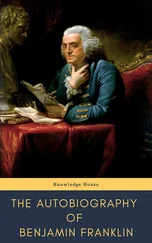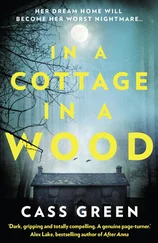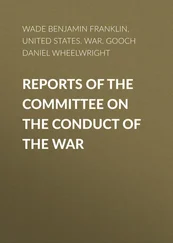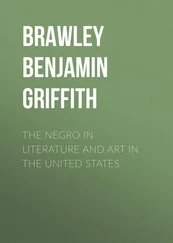When my mother came down into the backcourt and saw what I had done, she must have glimpsed my future in it like bad runes. ‘Whitsat?’ she said. ‘Did ye dae that?’ She chided me for wasting a full day on a silly picture and told me to clean her good icing knife. There were better uses for my time, plenty of errands I could do for her. But I spent the next day working on another painting, and the next, and the next, and did not care about the punishments that came after.
Whatever happened to this backcourt spirit? When exactly did it leave me?
I had always wanted more than my parents’ life and its routineness, but I did not take my education seriously enough, and my Leaving Certificate showed only the barest of passes in English and history, ruining any aspirations I might have had to become a teacher. Still, I could not settle for a job in the Singer factory or the biscuit warehouse, as my father had ordained. The afterglow of painting prodded me awake at night, urged me to submit an application to the Glasgow School of Art, told me I could conquer anything if I just applied myself. At the admissions interview, the registrar studied my portfolio and said, ‘Your work is naïve. It leans too much towards abstraction for abstraction’s sake. But it has more intensity than one normally finds in a woman’s painting, and you are still very young. Of course, you won’t be trained in oils until third year — that ought to correct the bad habits you’ve developed.’ A week later, he wrote to offer me a scholarship: We truly hope you’ll accept , the letter signed off, as though I had other choices.
By October, I found myself in colour theory lectures, attending slideshows on the canon; in drawing classes, idly sketching vegetable arrangements; in cold studios, measuring the proportions of nude models against a 2B pencil. My parents’ tenement seemed so far away, and I feared that the ‘intensity’ of my work was being dulled — normalised — by too much refinement of technique. In fact, this attention I paid to the rudiments of drawing and the methods of the Old Masters only heightened my appetite for painting. I made discoveries in these classes that I did not expect: how to imply the mood of a body with a sweep of Conté crayon, how broader narratives could be revealed through compositional decisions. My backcourt spirit survived in all the paintings I made in this period, though my early tutors did not reward it.
It was in the mural department, under the tutelage of Henry Holden, that I began to thrive. I was inspired by the grand traditions of mural painting: from the ice-age pictures in the caves of Lascaux, to the mosaicked churches of Ravenna and Byzantium, the frescos of Giotto, Tintoretto, Michelangelo, Delacroix, and the great political gut-shots of Rivera. In Holden’s tutorials, I felt energised and unhindered. He was a rangy old socialist in half-moon glasses, who gave us curious monthly assignments: Devise a scene for the ballroom of the Titanic. (For this, I painted a ballet of furnace-room labourers in cloth caps, dancing with wheelbarrows of coal, and was marked down for ‘discounting context’.) Paint a scene depicting a work by Shakespeare as it relates to modern times. (For this, I created a swathe of Glasgow tenements with Juliets waiting at every window, graveyards full of Romeo headstones and wounded Mercutios in army uniforms. The picture was kept for the School’s collection, and subsequently lost.)
Holden was the finest teacher I ever had. To ‘avoid any earache’ from the external assessor, he steered us away from the influence of Picasso (‘talent like his can neither be taught nor replicated’), but he allowed us to eschew the mannered ways of easel painting that were sacrosanct to other tutors: the single-viewpoint rule, the vanishing point, chiaroscuro. A great mural, he used to say, was perpetually in conversation with its environment: it should not retreat into the background or vie for attention, but ought to span ‘that invisible line between’. When Holden talked, his words stayed with you. He would twist the tip of his ear while he admired a work-in-progress, as though turning off a valve, and he walked along the building’s topmost corridors racketing his cane against the radiators, or whistling Irving Berlin tunes. Sometimes, he came to drink with us at The State Bar, and would cradle the same small measure of whisky in a glass until closing time.
Holden’s least prescriptive brief came in the fourth year, prior to our diploma show. Complete a mural for a platform at Central Station. There were no limits on theme or materials, he told us. ‘It needn’t convey anything of the railway per se. But, of course, you should think about how the work will be slanted by its location, and vice versa. I want to see your imaginations taking you places. I also want you focusing them where they ought to be. Understand?’
For weeks, I failed to summon a single idea. I spent full days in the studio, numb and depleted, searching for a hint of something true, but any bright intentions I had soon floundered on the pages of my sketchbook. Anxieties began to overrule my normal instincts: what if the backcourt spirit was not enough to sustain me? What if I was never meant to listen to it in the first place? Then Holden came to rescue me. He edged into my workspace, saw the blankness of the canvas I had stretched upon the frame, and said, ‘What’s the matter, Ellie? Have you let the fight go out of you?’
That was exactly how I felt, and I told him so.
‘Then pick a different battle,’ he said. ‘Disturb the peace a bit.’
‘I don’t know how.’
Holden pondered my face, as though seeing it for the first time. ‘Remind me again: are you Catholic?’
‘My mother is.’
‘That wasn’t my question.’
‘Well, I suppose I still believe in God, but not in what the Bible says.’
‘There you are then. Paint what you believe.’
In the moment, his advice seemed so woolly and impractical that I felt even more adrift. Paint what you believe . He might as well have said, Paint the air. But when I got back to my little room-and-kitchen flat and tried to sleep, his words kept pinching at me, until I relented to their meaning. Holden was not telling me to reach inside myself for some pious motivation; he was inviting me to paint the world as I understood it, to convey my own perspective with conviction. The mural should be the picture I would hope to see if I were standing on that platform with my suitcase, waiting for a train to sidle in and carry me away. It should resonate with its location but also transcend it. It should be both personal and public.
I sketched until the light of early morning, making sense of my initial ideas in ink, and finishing with gouache on paper. The next day, Holden found me in the studio, adding a grid of construction lines to the completed image. ‘Ah,’ he said, ‘you’ve finally picked a battle,’ and I did not see him again until the entire twelve-by-three-foot canvas was completed. At the diploma show, modest crowds formed around it. There was head-scratching and consternation. There was excitement. I felt the shift of my trajectory.
What the crowd saw that night was a depiction of an ordinary station platform. The grey-rendered steam of a locomotive swelled from the lower aspect of the canvas. In parts, I had thinned the whorls of paint to near translucence; in others, it cloyed like molasses, in level spots of oil and glaze that almost shone. Amidst the curls of smoke was a rolling horde of men in rags and bedraggled women holding babies. They were clambering from the west side of the platform, stumbling over each other in a tumult, falling headlong. And in the calm space to the east, where the grey mist was dispersing, a figure stood in a baggy pinstriped suit, his body turned, his face unseen, but slightly peering backwards. His right hand was stigmatised and held a crown of thorns. He was barefoot and his tawny hair was greased and combed. A trail of oats was spilling from the briefcase in his other hand. A Bible rested in his top pocket. Beyond him were sunlit pastures fenced off with barbed wire; ships already leaving port; the distant flatline of the sea. I called it Deputation.
Читать дальше












